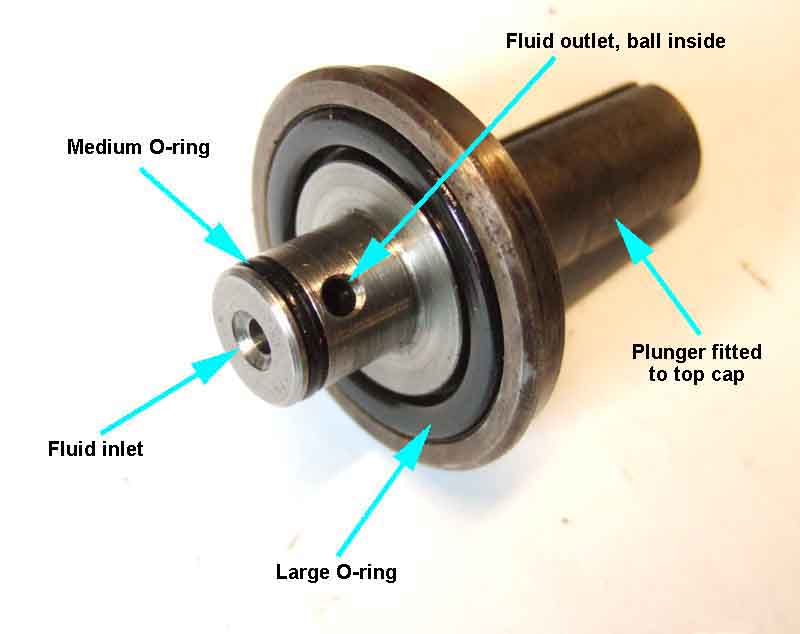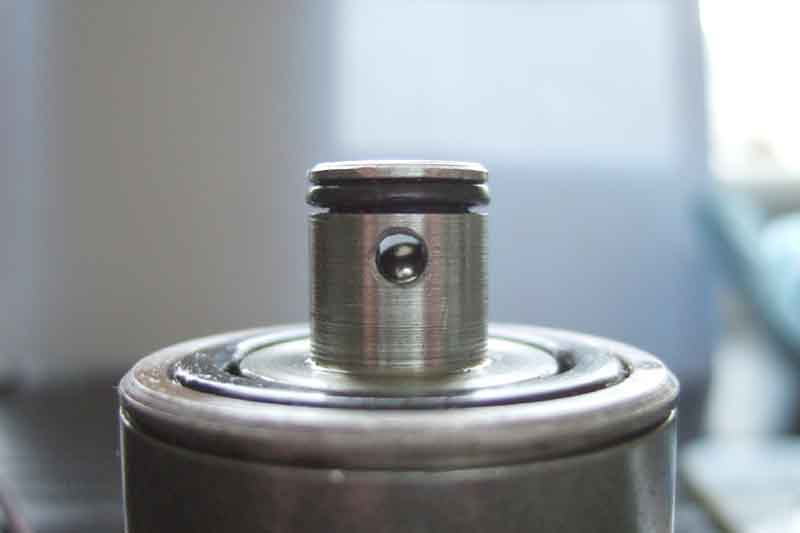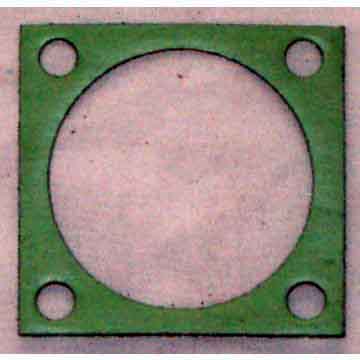Solenoid assembly ...

Top cap. When OD is engaged and oil is not flowing from the inlet to the outlet, the medium O-ring prevents oil escaping past the outside of the solenoid, which would cause pressure loss. The large O-ring prevents oil escaping down the side of the solenoid, which leaks past the cover.

In the released position the ball and plunger should be pushed back so releasing oil pressure. If it doesn't move back far enough there may be enough residual pressure to prevent the operating pistons and clutch sliding member moving fully back from the annulus to the outer casing so it can't fully engage direct drive. While the clutch sliding member is between the two there is no engine braking (you still have drive as until OD is fully engaged the one-way clutch is bypassing the slipping clutch). However the plunger comes back at least 2mm when the solenoid is released, giving a clear path through the valve, as can be seen here.

The standard solenoid gasket. If a thicker or second one of these is fitted both the solenoid body and the plunger will move out from the overdrive casing by the extra thickness. But as the seat of the valve is part of the solenoid assembly, that will move out as well, so the plunger and the valve seat will have the same relationship and travel as before. Also by allowing the whole solenoid assembly to move back you will take the pressure off the large sealing O-ring, and oil will travel down to the cover and gasket, and almost certainly leak out. (Image from Motaclan/Leacy)

If a second gasket were to be fitted between the existing gasket and the cover plate, with a hole large enough to allow the plunger to move back as far as the cover plate, but not large enough to allow the solenoid body to move back, this may well allow the plunger to move back far enough to solve the problem. However that will possibly cause another problem, by the secondary gasket insulating the solenoid assembly from the cover plate, and hence from the OD body, and earth. The spring on the solenoid coil is compressed when the solenoid is clamped between the bottom cover and the O-ring, and is how it makes its earth connection to the solenoid body. The solenoid assembly is then clamped between it's large O-ring and the bottom cover to make an earth connection with the outside world. Although the whole of the solenoid body can be used to provide an earth, and the sides of the body are in contact with the OD casing, it is not a pressure contact, so the earthing, and hence OD operation, may become unreliable. The question also has to be asked - why isn't the plunger coming back far enough? If something is physically preventing it from coming back as far as it should, then allowing more space isn't going to help - unless the obstruction is directly under the plunger. And if it is coming back as far as it should be, then something else must be keeping the pressure higher than it should be. This could be an obstruction in the solenoid top cap, or possibly the relief valve assembly.
